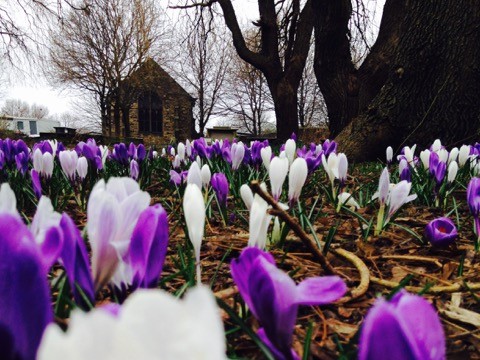Hill Top Chapel
About The Hill Top Chapel
History of our meeting place.
Hill Top Chapel was built in 1629 in Attercliffe by English Puritans committed to Reformed worship and teaching. Their first minister was Stanley Gower, a man originally from Derbyshire, who was educated under Archbishop James Ussher in Armagh. Gower served as the founding minister of Hill Top Chapel from 1630-1635 until he was called to the pastorate in Herefordshire. From there he went on to be one of the delegates to the Westminster Assembly. Gower was involved in the composition of the Westminster Standards.

The Church of England congregation in Attercliffe began to grow over the years and remained strong in reformed doctrine even after the Great Ejection of 1662. A son from one of the influential families in that area served in the English Civil War as a colonel on the side of Parliament. Another son served as a minister at Hill Top Chapel. Later, a Presbyterian minister named Timothy Jollie, the pastor of Upper Chapel in Sheffield, started a Presbyterian academy for training men for the ministry just minutes from the chapel; it was operational until 1714 and doubtless was involved with the chapel.
Want to visit us?
Find our more about our meeting places and places of worship.
Hill Top Chapel was built in 1629 in Attercliffe by English Puritans committed to Reformed worship and teaching. Their first minister was Stanley Gower, a man originally from Derbyshire, who was educated under Archbishop James Ussher in Armagh. Gower served as the founding minister of Hill Top Chapel from 1630-1635 until he was called to the pastorate in Herefordshire. From there he went on to be one of the delegates to the Westminster Assembly. Gower was involved in the composition of the Westminster Standards.
The Church of England congregation in Attercliffe began to grow over the years and remained strong in reformed doctrine even after the Great Ejection of 1662. A son from one of the influential families in that area served in the English Civil War as a colonel on the side of Parliament. Another son served as a minister at Hill Top Chapel. Later, a Presbyterian minister named Timothy Jollie, the pastor of Upper Chapel in Sheffield, started a Presbyterian academy for training men for the ministry just minutes from the chapel; it was operational until 1714 and doubtless was involved with the chapel.
The population in that area continued to grow and by 1649 the chapel became the parish church of three other villages. The population just in Attercliffe was around 1000 at the time. Many more additions to the building were made in the 18th century and it was recorded that 578 attended church at Hill Top Chapel at the end of the 18th century. Their numbers had grown so large by 1832 that they built another larger church just half a mile from Hill Top Chapel called Christ Church Attercliffe. That building was destroyed during a bombing raid in 1940.
Hill Top Chapel was reduced in size and renovated many times over the course of the next 100 years. Formal weekly services by the Church of England ceased after 1916 and it remained derelict for many years. When the Student Olympics came to Sheffield in 1991, Hill Top Chapel was renovated again. It served as a community centre from 2002 to 2010 and then in more recent times has served as a place of prayer, church events, and other such uses. However, on 30th March 2014, Sheffield Presbyterian Church celebrated a special day of thanksgiving and began having regular weekly worship services in Hill Top Chapel. Once again Reformed worship and gospel preaching was brought to Hill Top Chapel.
